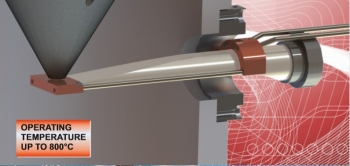Backscatter Detectors
Although the more common SEM images are formed with emitted secondary electrons, electrons that are backscattered (from the nucleus of an atom) can also contain quite valuable information about a sample's topography and composition. The larger the nucleus, the more the electrons that are backscattered. Often times, one need not resort to the use of EDS (energy dispersive spectroscopy) for elemental information, yet the use of a good, reliable backscattered electron (BSE) detector can give similar information far faster and for lower cost.
Earlier SEMs typically came from the manufacturer without any BSE detector and if the user needed to obtain this type of information, a separate detector had to be purchased. At some point, some of the manufacturers started incorporating BSE detectors into their new instruments.
Today, there are essentially two different approaches to BSE detectors, the first being the use of scintillator technology, and the other based on a solid state detector which utilizes silicon diodes. The Robinson Backscatter Detectors is the best known of the scintillator technology, but these are no longer available as new system. We have found the REBEKA Backscatter Detector as a suitable replacement especially with an updated design.
The Robinson series of Backscattered Detectors and Cathodoluminescence detectors are no longer being manufactured. Support for current systems has been phased out. Please contact SPI Supplies with any of your questions regarding the Robinson Backscattred Detectors.



